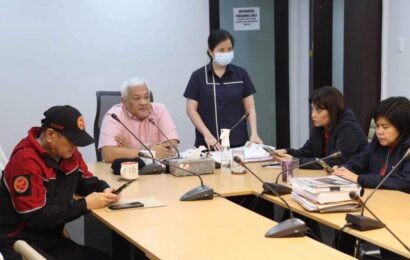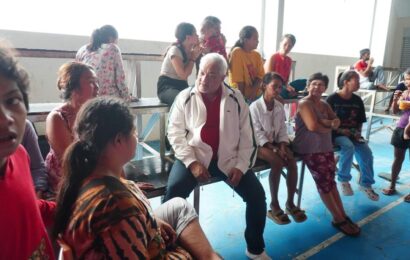CABANATUAN CITY (PIA) — The Department of Health (DOH) Central Luzon Center for Health Development (CLCHD) has provided guidance to mothers to ensure healthy pregnancies and safe childbirths.

This is in line with the observance of Safe Motherhood Week every second week of May by virtue of Proclamation No. 200, series of 2002.
DOH CLCHD Family Health Cluster Midwife Alyssa Marie Bais disclosed that there were 800 maternal deaths globally per day in 2020, which was equivalent to one maternal death every two minutes.
“On the national level, in 2020, we had 144 maternal deaths per 100,000 live births. And on the regional level, in 2023, we had 55 maternal deaths per 100,000 live births. If we look at the raw number, that is 84 maternal deaths, which is equivalent to one maternal death every four to five days, and one teenage pregnancy death every month,” she added.
Under the National Safe Motherhood Program, the antenatal, intrapartum, and postnatal care are closely monitored to ensure the health of both mothers and newborns and to prevent fatalities.
Skilled healthcare professionals provide antenatal or prenatal care to pregnant women to ensure the best health conditions for both mother and baby.
This involves identification, prevention, and management of pregnancy-related diseases; birth planning; health education and promotion, particularly in nutrition, family planning, immunization, and newborn screening.
Bais emphasized that antenatal care is important to promptly identify the danger signs during pregnancy that could lead to unfavorable outcomes for both the mother and the baby, as well as to prevent further complications.
“The danger signs for mothers during this period are severe headache, blurring of vision, fever, fast or difficult breathing, severe abdominal pain, vaginal bleeding, and convulsions,” she said.
Intrapartum care, on the other hand, is provided by skilled healthcare professionals from the onset of labor to the delivery of the baby.
This includes the Essential Intrapartum and Newborn Care, also known as the “Unang Yakap” (First Embrace).
“This is a simple and straightforward protocol that our research has proven effective. It also helps prevent newborn deaths without additional costs to families or our health facilities,” Bais said.
Finally, skilled healthcare professionals provide postnatal or postpartum care after the baby’s delivery until six weeks or 42 days after delivery.
This care involves the early detection and management of complications, prevention of disease, as well as woman-centered education and counseling.
Bais underscored that the danger signs for both the mother and the baby are being monitored during this period.
“The danger signs for the mother [during postpartum] include bleeding, foul-smelling discharge, fever, severe headache, severe nausea, dizziness or fainting, blurring of vision, difficulty breathing, chest pain, and severe swelling,” she pressed.
Meanwhile, Bais stressed that the danger signs for the newborn include fever, jaundice, fast breathing, cyanosis, breastfeeding difficulty, diarrhea or loose watery stools, foul-smelling umbilical discharge or infected cord stump, and poor weight gain or rapid weight loss.
As such, DOH has provided certain reminders that mothers should keep in mind to ensure their health and that of their unborn children.
Firstly, it is advised that mothers seek prenatal and childbirth care only at a health facility, such as a birthing or lying-in clinic or hospital, with the help of doctors, nurses, or midwives.
Mothers are also urged to familiarize themselves with the danger signs that indicate the need for immediate consultation with a hospital or specialist.
In addition, mothers are encouraged to follow the recommended schedule for visits to the health facility or health worker.
“We have to reach every pregnant woman. We need to ensure that they receive the appropriate health care and support from the community and health system to ensure the well-being of themselves and their baby,” Bais furthered.
SOURCE: Maria Asumpta Estefanie C. Reyes PIA3





